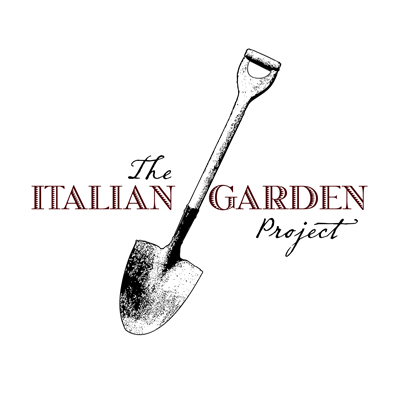Preserving Italian American Heirlooms
In an Italian American garden nothing is more precious than fruits and vegetables from the Old Country with a taste of home. Seeds and cuttings from these prized plants were brought from Italy, carefully propagated in backyard gardens, and traded as valuable commodities among Italian immigrant communities. Years of cultivating these Mediterranean varieties here in the US have created unique strains with Italian origins yet well adapted to thrive in a new climate .Unfortunately, each year as gardeners age and fewer and fewer plots are planted, these heirloom seeds and trees, which have been nurtured and passed down over hundreds of years and across continents, risk being lost or forgotten. In order to safeguard these unique treasures, The Italian Garden Project™ created our Legacy Seed Collection and our Legacy Fig Tree Collection to preserve this precious living history which has nourished our families and shaped our cultural identity.
The Legacy Seed Collection
Our Legacy Seed Collection is composed of seeds brought over from Italy, and grown in the US for at least 35 years. Some of the seeds in our collection have been grown and passed down through Italian families for centuries, like the Sicilian parsley seeds donated by Sue Cancilla Conde. Many of these represent rare varieties, sometimes hard to find even in the Italian towns where they originated. Such was the case with Baciccia beans, a flat, Roma-type bush bean. They were brought to Northern California by immigrants from Liguria in the early 1900s. Until recently, these beans could no longer be found in Italy until they were re-introduced to Liguria from Stockton, California.
Collecting, saving, and propagating these unique varieties in our Legacy Seed Collection helps protect our planet’s biodiversity and ensures that these rare plants do not disappear forever. We are preserving not just seeds, but the authentic flavors selected and nurtured by our ancestors.
Legacy Fig Tree Garden
The fig is a revered fruit to Italian Americans. It adapts and thrives in a land not its own, much like the immigrants themselves. Growing a fig tree when they arrived in the US was a way for our uprooted ancestors to have a small piece of the Old World in the New. Immigrants cared lovingly for these trees, wrapping them each winter to protect them from the cold, pruning them each season to maximize fruit production, and covering them in nets to keep pesky birds and squirrels from stealing the eagerly anticipated figs. Fig trees have become an icon of the Italian American experience.
Recognizing the importance of these trees, we have created our Legacy Fig Tree Collection, composed of fig trees brought from Italy and grown by Italian American gardeners in the United States for at least 25 years. This garden not only preserves these living heirlooms, but also honors the humble heroes who grew them.
Currently the collection holds over 25 trees, including trees from six regions of Italy. We not only preserve the fig trees themselves, but also the story of the gardener, learning as much as we can about them, their gardens, and a way of life closely connected to the earth. For example, one of our first trees was donated by Bruno Garofalo of Pittsburgh, PA. The original cutting arrived in Pittsburgh from Bruno’s hometown of Petrella Tifernina, in Molise, stitched into the lining of a coat, and grew to be over 20 feet tall.
Below is a sample of the profile we are creating for each tree in the collection.
If you or your family has seeds or fig trees that trace their origin to Italy let us know. We are working to expand these collections, but we can’t do it without your help.





